NCERT Summary: Cell Cycle and Cell Division | Science & Technology for UPSC CSE PDF Download
| Table of contents |

|
| Cell Divison |

|
| Cell Cycle |

|
| Significance of Mitosis |

|
| Meiosis |

|
| Significance of Meiosis |

|
"All living things, no matter how big, start from just one tiny cell. You might wonder how something so small can become so large. Well, cells have the amazing ability to divide into two. Each time a cell divides, it makes two new cells, called daughter cells. These daughter cells can then grow and divide themselves. This process keeps repeating, with each new generation of cells growing and dividing. Eventually, from just one cell, you can get a whole bunch of cells, forming large organisms made up of millions of cells."
Cell Divison
"Cell division is when one cell splits into two, called parent and daughter cells. The process differs between prokaryotic and eukaryotic cells. Prokaryotic cells, which are simpler, have one circular chromosome and few other parts. They just grow, duplicate their DNA, and divide. This is how they reproduce. Eukaryotic cells, on the other hand, are more complex. They have multiple chromosomes in a nucleus, along with many other parts. During the cell cycle, which includes growth, DNA copying, and division, all these parts need to be duplicated and separated correctly."
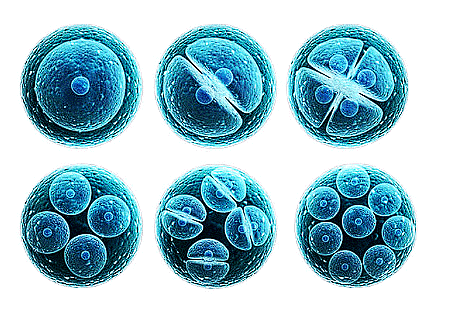
Cell Cycle
"The cell cycle is a cycle of events that happens over and over. It involves growth, making new DNA, and splitting into two cells. In prokaryotes, like bacteria, it's simple: they grow, copy their DNA, and divide to make more of themselves. This is called asexual reproduction. But in eukaryotes, like plants and animals, the process is more complex."
Phases of Cell Cycle
- Interphase
- M Phase (Mitosis phase)
The M Phase represents the phase when the actual cell division or mitosis occurs, and the interphase represents the phase between two successive M phases. It is significant to note that in the 24-hour average duration of the cell cycle of a human cell, cell division proper lasts for only about an hour. The interphase lasts more than 95% of the duration of the cell cycle.
The M Phase starts with the nuclear division, corresponding to the separation of daughter chromosomes (karyokinesis) and usually ends with the division of cytoplasm (cytokinesis). The interphase, though called the resting phase, is the time during which the cell is preparing for division by undergoing both cell growth and DNA replication in an orderly manner.
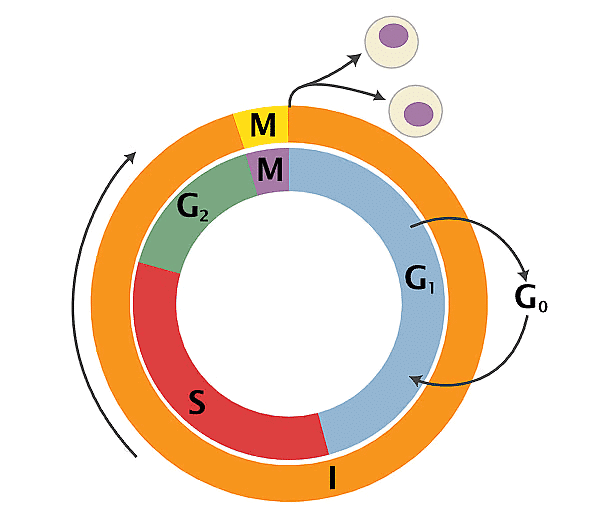
Interphase
G1 phase (Gap 1): The interval between mitosis and initiation of DNA replication. During G1 phase, the cell is metabolically active and continuously grows but does not replicate its DNA.
S phase (Synthesis): Marks the period during which DNA synthesis or replication takes place. If the initial amount of DNA is denoted as 2C, then it increases to 4C during this phase.
G2 phase (Gap 2): Proteins are synthesized in preparation for mitosis while cell growth continues.
Some cells in adult animals do not appear to exhibit division (e.g., heart cells), and many other cells divide only occasionally, as needed to replace lost cells. These cells that do not divide further exit G1 phase to enter an inactive stage called the quiescent stage (G0) of the cell cycle.
In animals, mitotic cell division is usually seen in diploid somatic cells. However, there are exceptions where haploid cells divide by mitosis, for example, male honey bees. Plants can show mitotic divisions in both haploid and diploid cells.
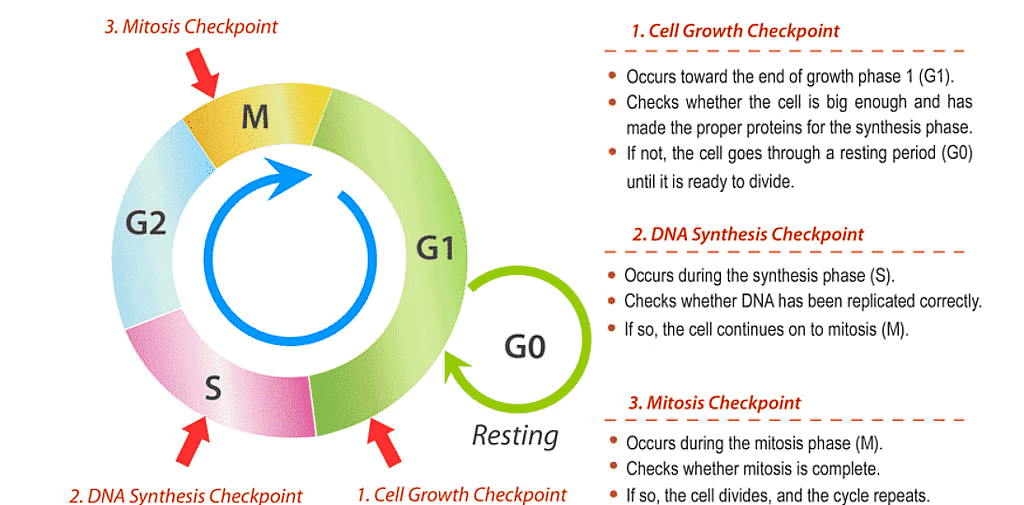 M Phase
M Phase
This is the most dramatic period of the cell cycle, involving a major reorganization of virtually all components of the cell. Since the number of chromosomes in the parent and progeny cells is the same, it is also called equational division. Mitosis is divided into four stages of nuclear division (karyokinesis):
- Prophase
- Metaphase
- Anaphase
- Telophase
1. Prophase
Prophase is the first stage of karyokinesis of mitosis following the S and G2 phases of interphase. The completion of prophase can be marked by the following characteristic events:
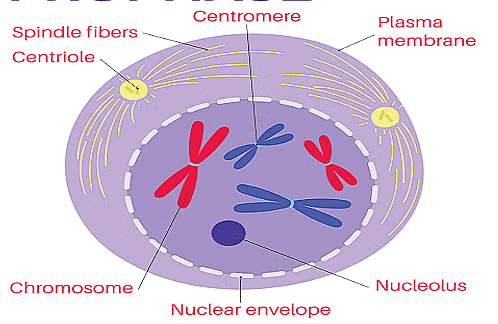
- Chromosomal material condenses to form compact mitotic chromosomes.
- Centrosome moves towards opposite poles of the cell.
Cells at the end of prophase do not show golgi complexes, endoplasmic reticulum, nucleolus, and the nuclear envelope.
2. Metaphase
The complete disintegration of the nuclear envelope marks the start of the second phase of mitosis. At this stage, chromosomes align at the equator of the cell, and spindle fibers attach to kinetochores of chromosomes.
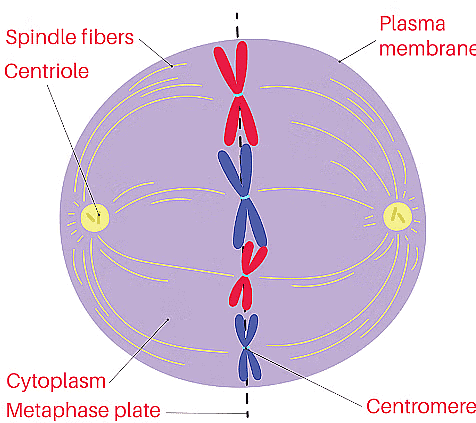
3. Anaphase
During anaphase, chromosomes separate, and chromatids move to opposite poles of the cell.

4. Telophase
At the beginning of telophase, chromosomes decondense and lose their individuality. Chromosomes cluster at opposite spindle poles, and nuclear envelope redevelops around the chromosome clusters at each pole.
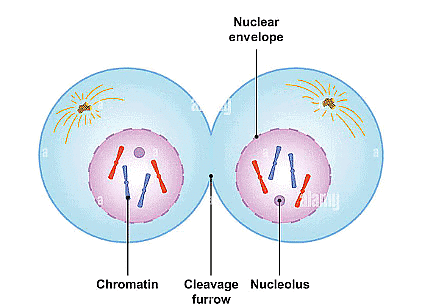
Cytokinesis
Mitosis accomplishes the segregation of duplicated chromosomes into daughter nuclei and the division of the cell into two daughter cells by the separation of cytoplasm. In animal cells, this is achieved by the appearance of a furrow in the plasma membrane. Plant cells undergo cytokinesis by wall formation starting in the center of the cell.
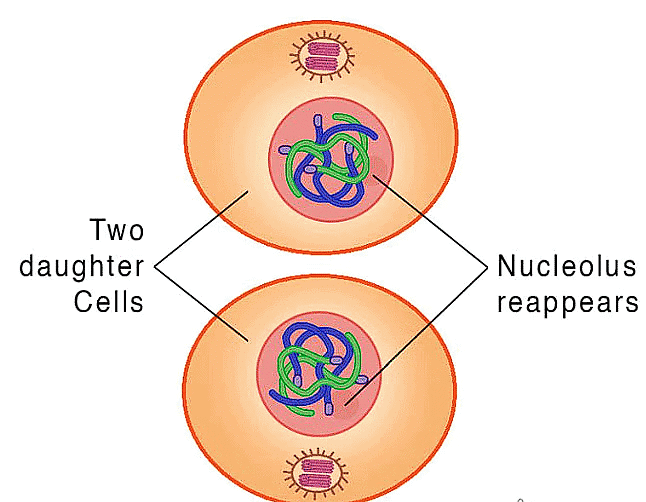
Significance of Mitosis
Mitosis results in the production of diploid daughter cells with identical genetic complement. It is essential for growth, cell repair, and cell replacement in various tissues. Mitotic divisions in meristematic tissues result in continuous growth of plants throughout their life.
Meiosis
Meiosis is a specialized kind of cell division that reduces the chromosome number by half. It ensures the production of haploid daughter cells and is essential for sexual reproduction in organisms. Meiosis involves two sequential cycles of nuclear and cell division called meiosis I and meiosis II.
Meiosis I
Prophase I, Metaphase I, Anaphase I, and Telophase I are the key stages of meiosis I, involving pairing of homologous chromosomes, recombination, and separation of homologous chromosomes.

1. Prophase I: Long and complex, involves synapsis and crossing over of homologous chromosomes.
- Leptotene: Chromosomes gradually become visible, compaction continues.
- Zygotene: Chromosomes pair up (synapsis), forming bivalents or tetrads with synaptonemal complex.
- Pachytene: Chromatids of bivalents become distinct, recombination nodules appear for crossing over.
- Diplotene: Synaptonemal complex dissolves, chiasmata form at crossover sites.
- Diakinesis: Terminalization of chiasmata, chromosomes fully condense, spindle assembles.
2. Metaphase I: Homologous chromosomes align at the metaphase plate.
3. Anaphase I: Homologous chromosomes separate.
4. Telophase I: Two haploid cells form, each with half the original chromosomes.
Meiosis II
Meiosis II resembles a normal mitosis, involving prophase II, metaphase II, anaphase II, and telophase II stages, resulting in the formation of four haploid daughter cells.
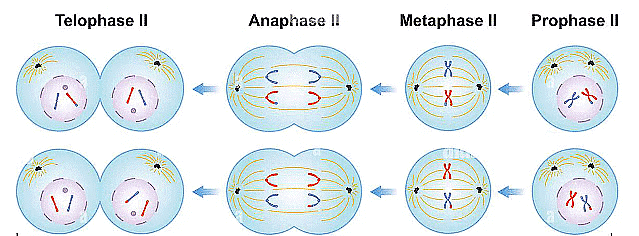
1. Prophase II: Begins immediately after cytokinesis, chromosomes start compacting again, nuclear membrane disappears.
2. Metaphase II: Chromosomes align at the equator, microtubules attach to kinetochores of sister chromatids.
3. Anaphase II: Centromeres split, sister chromatids move to opposite poles.
4. Telophase II: Nuclear envelope reforms, cytokinesis results in four haploid daughter cells.
Significance of Meiosis
Meiosis ensures the conservation of specific chromosome numbers in sexually reproducing organisms and increases genetic variability in populations, essential for evolution.
|
90 videos|491 docs|209 tests
|
FAQs on NCERT Summary: Cell Cycle and Cell Division - Science & Technology for UPSC CSE
| 1. What are the main stages of the cell cycle? |  |
| 2. What is the significance of mitosis in organisms? |  |
| 3. How does meiosis differ from mitosis? |  |
| 4. What is the significance of meiosis in sexual reproduction? |  |
| 5. How do cell cycle checkpoints function? |  |




















